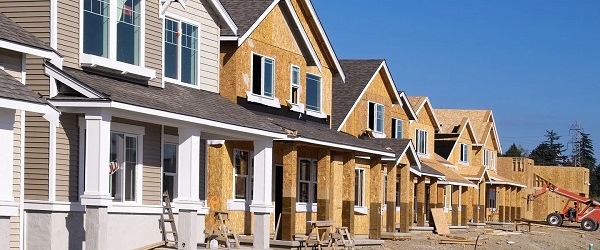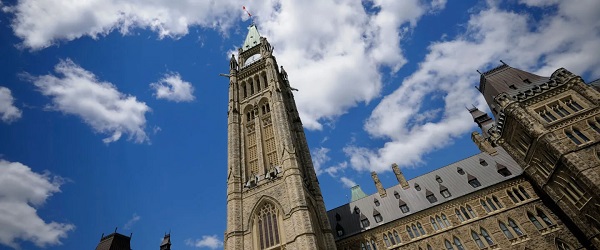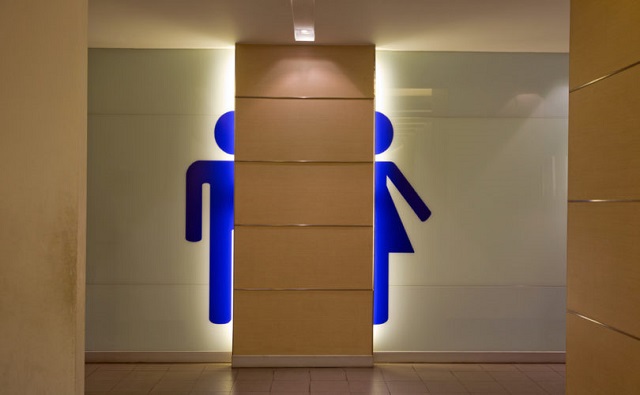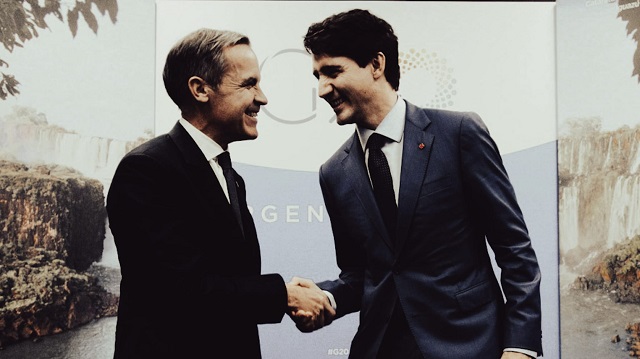Business
Ontario government will spend more—for less housing

From the Fraser Institute
By Jake Fuss and Austin Thompson
To state the obvious, in Ontario homebuilding is not keeping pace with population growth. This imbalance is driving sky-high home prices and rents, not only in the GTA but many other Ontario cities.
What’s to be done?
In the Ford government’s recent budget, “housing” appears not as a central theme but as one of several areas to receive “support” (read: increased spending) in light of Trump’s tariffs, mainly in the form of more money for local infrastructure.
Specifically, the government will spend an additional $400 million on the Housing-Enabling Water Systems Fund and the Municipal Housing Infrastructure program (on top of the $2 billion already committed to these two programs until 2027). The government will also spend $325 million (over seven years) on a joint project with the federal government and City of Toronto for the waterfront revitalization plan, which includes new housing development.
And as part of this “housing” spending spree, the Ford government will continue to spend millions on the Community Infrastructure Fund—which targets smaller communities—and programs to encourage skilled trades, which could support housing development.
So, will Ontarians, including those who can’t afford to buy a home or struggle to pay their rent, get good value for their taxpayer dollars?
For the answer to that question, consider this. The Ontario government has already spent billions on its housing strategy, yet has not moved the needle on housing supply. Even Ford’s new budget with its massive housing “support” includes an abysmal forecast for new home construction. According to the budget, housing starts will actually fall from 74,573 in 2024 to 71,800 in 2025, continuing the decline from the 89,297 new homes started in 2023. And the budget now forecasts that only 303,700 new homes will be built between 2024 and 2027—an 18 per cent decrease from the 370,400 projected in last year’s budget.
This low level of homebuilding puts the Ford government’s target for 1.5 million housing starts between 2022 and 2031 further out of reach. In fact, if the projected average of housing starts from 2022 to 2027 is maintained until 2031, Ontario would fall short of its target by more than 680,000 homes—severely reducing the likelihood of any meaningful improvement in housing affordability.
The Ford government blames the slowdown in housing starts on economic uncertainty and U.S. trade policy. These factors matter, but there’s plenty of blame to go around. Major Ontario municipalities (including Toronto, Hamilton and Markham) are among Canada’s worst performing cities for how long they make homebuilders wait to receive municipal approval to start construction. Ontario municipalities also impose some of the highest upfront charges on new housing development—for example, a high-rise development in Toronto faces municipal charges nearly 20 times higher than in Edmonton on a per square foot basis. More fundamentally, the federal and provincial governments have failed to create the business and investment environment needed to finance housing development. And Ottawa’s supercharged immigration targets have created many more potential homebuyers and renters, driving up costs.
So again, what should the Ford government do?
Ontario’s housing crisis is a big problem with many contributing factors. For its part, the Ford government should focus on low-cost ways to spur housing growth. To the government’s credit, the recently proposed Protect Ontario by Building Faster and Smarter Act, 2025 is one such effort. The bill would require reluctant municipalities to allow more and denser housing development, streamline regulatory hurdles, and help reduce the upfront charges tied to new construction. It holds some promise for accelerating homebuilding.
If the Ford government wants to hit its housing target and offer hope to Ontarians struggling to buy or rent, it must shift its focus from spending to structural reforms. Real progress in the housing front requires cutting red tape and lowering homebuilding costs.
Business
Canadians Will Pay For The Federal Budget Delay

From the Frontier Centre for Public Policy
In his latest commentary, Lee Harding slams the Carney government for skipping the federal budget while plowing ahead with tax cuts and spending sprees. With no clear plan and ballooning deficits, Canadians wonder how these promises will be paid for—hint: more debt. Harding warns that Ottawa’s “figure it out later” approach is reckless, echoing past fiscal blunders that still haunt taxpayers today. Brace yourselves—this bill is coming.
The Carney government skipped the budget, but not the spending. And you’re on the hook
What’s better?
To spend and save without a plan, or to do so with accurate information and a focused strategy? The federal government has chosen the former, and one thing is certain: Canadians are going to pay.
Finance Minister François-Philippe Champagne announced on May 14 that the newly elected Carney government wouldn’t table a spring budget, opting instead to take things “step-by-step.” Parliament will sit until June 20, but aside from the throne speech, the only stated priority is to lower the first income tax bracket from 15 per cent to 14. That would slightly lower federal income taxes for most working Canadians by reducing the rate on the first $55,000 of income, saving up to about $550 a year.
That sounds good—until you ask how it’s being paid for. Without a budget, Canadians have no clear picture of the trade-offs or long-term costs.
Tabling a budget is the government’s formal presentation of its financial plan to Parliament. It outlines spending priorities, revenue forecasts and deficit projections for the year ahead. Skipping this step is no small matter.
“Cut taxes first, figure out how to pay later” isn’t the worst way to roll the dice, but it is far from the best. And we already know how Ottawa will cover the shortfall: more deficit spending. Canada hasn’t seen a balanced federal budget in nearly 20 years, and there’s no sign of one on the horizon.
Canadians will repay this tax cut with interest, sacrificing tomorrow’s services for today’s soundbites. This approach lacks fiscal prudence; doing it without a budget only compounds the recklessness.
Ottawa rarely fails to table a budget. The last time was during the height of the COVID pandemic in 2020. The results were disastrous: public debt surged and remains with us today. That was an unprecedented global crisis. There is no such emergency in 2025—only political calculation.
Carney claimed during the election campaign that proposed U.S. tariffs placed Canadians in “the greatest crisis of our lifetimes.” Yet, days later, he stood alongside U.S. President Donald Trump at the White House, smiling for photos and flashing a thumbs-up. For perspective, imagine Volodymyr Zelenskyy flying to Moscow to do the same with Vladimir Putin.
Some may argue the spring election left too little time before summer to draft a budget. But that doesn’t hold water. The Harper Conservatives won a majority on May 2, 2011, and still tabled a budget that spring. Carney’s cabinet includes many Trudeau-era veterans, and the Department of Finance remains staffed by experienced civil servants. The Liberals can and should produce a budget.
Parliament has even sat in July to pass urgent legislation. In 2020, MPs returned on July 20 to approve the Canada Emergency Wage Subsidy. In 1988, they stayed until July 7 to pass the Canada–U.S. Free Trade Agreement Implementation Act. There is precedent—and there is time.
Even when the Liberals do present budgets, they’ve only deepened Canada’s fiscal hole. On Dec. 31, 2015, the net federal debt stood at $693.8 billion. By the end of 2024, it had climbed to $953.9 billion—an increase of 37.4 per cent in just nine years. These debts will likely never be repaid.
A 2022 Fraser Institute study estimated that a 16-year-old Canadian will pay $29,663 in income taxes over her lifetime just to cover interest on the federal debt—money that won’t fund services but simply keep creditors happy.
The Liberals’ current platform is thin on discipline. It includes income tax cuts worth $4.2 billion and a GST exemption on first-time home purchases, costing $383 million. But these are overshadowed by broader spending.
Last year’s budget outlined $538 billion in spending, with $40 billion funded through borrowing. By fall, that deficit had grown past $60 billion. This year’s platform will make matters worse by $46.8 billion, even after factoring in $20 billion in retaliatory tariff revenues.
If the government struggles to follow its own budget when it sets one, how much damage might it do without one? Plenty.
Parliament must still approve any new spending through supplementary estimates—requests for additional funds beyond what’s already authorized. But without the context of a full budget, MPs will be asked to approve billions in spending without a clear picture of what’s affordable.
What would be refreshing, though unlikely, is for non-Liberal MPs to approve only measures that strengthen the Canadian economy, military and policing. They could reject everything else and argue that responsible spending can’t occur without a formal financial plan.
Governments should manage national finances like a responsible household: with a clear budget and the discipline to live within their means. Unfortunately, the Carney government appears unwilling—or unable—to do either.
Lee Harding is a research fellow with the Frontier Centre for Public Policy.
Business
Federal government’s ‘very different approach’ will further erode Ottawa’s finances

From the Fraser Institute
By Jake Fuss and Grady Munro
This week, after five months off and one federal election, Parliament will start a new session in Ottawa. And federal finances should be a top priority.
Too much of anything can be harmful. In recent years, both the size of government in Canada and the government debt burden have grown too large, harming economic growth and living standards. Why? Because when government grows too large, it begins taking over functions and resources that are better left to the private sector.
Consider this. From 2014 to 2024, total government spending in Canada (federal, provincial and local) increased from 38.4 per cent (as a share of GDP) to 44.7 per cent—the second-fastest increase among 40 advanced countries worldwide. Consequently, the total size of government in Canada increased from 25th highest to 17th highest (out of the same 40 countries). Again, this means that government now essentially controls a significantly larger share of our economy.
During the same 10-year period, Canada’s gross government debt (federal, provincial and local) increased from 85.5 per cent (as a share of GDP) to 110.8 per cent—the third-fastest increase among the 40 countries. As such, Canada’s debt ranking among the 40 countries increased from 14th highest to 7th highest.
Why should Canadians care?
A large government debt burden lands squarely on the backs of Canadians. For example, governments and the private sector compete for the limited pool of savings available for borrowing. As governments increase the amount they borrow, there are fewer savings available for the private sector. All else equal, this drives up interest costs and makes it more expensive for families to take out a mortgage or businesses to attract investment.
Moreover, debt accumulation today will likely mean higher taxes in the future. Indeed, a 16-year old Canadian in 2025 will pay an estimated $29,663 over their lifetime in additional personal income taxes (that they otherwise wouldn’t pay) due to ballooning federal debt. In other words, by accumulating debt today, the government is disproportionately burdening younger generations with higher taxes in the future.
Of course, when talking about Canada’s overall debt load, the federal government plays a big role. The Carney government says it will “build Canada into the strongest economy in the G7” by employing a “very different approach” to federal fiscal policy than its predecessor. Yet the Carney campaign platform promises to add to Ottawa’s mountain of debt (which currently stands at a projected $2.2 trillion) by running huge annual deficits until at least 2028/29, even outspending the Trudeau government’s previous plan. This is not a “very different approach.”
The Carney government plans to table its first budget in the fall. As Parliament resumes, let’s hope the new prime minister shows real leadership by charting a clear path towards fiscal sustainability and stronger economic growth.
-

 Fraser Institute1 day ago
Fraser Institute1 day agoFederal government’s ‘affordable housing’ strategy doomed without strong income growth
-

 Alberta2 days ago
Alberta2 days agoJann Arden’s Rant Will Only Fuel Alberta’s Separation Fire
-

 Bruce Dowbiggin2 days ago
Bruce Dowbiggin2 days agoCaitlin Clark Has Been The Real Deal. So Her WNBA Rivals Hate Her
-

 armed forces2 days ago
armed forces2 days agoNew Trump-Pentagon ad resets mission: end wokeness, win wars
-

 Health1 day ago
Health1 day ago21 Canadian doctors demand review of transgender drugs, surgeries for children
-

 Daily Caller2 days ago
Daily Caller2 days agoThere’s A Catch To California’s Rosy Population Stats
-

 conflict2 days ago
conflict2 days agoRussia Launches Largest Drone Attack Of War As Trump Loses Patience With Putin
-

 Carbon Tax1 day ago
Carbon Tax1 day agoCarney picks up Trudeau’s net-zero wrecking ball






